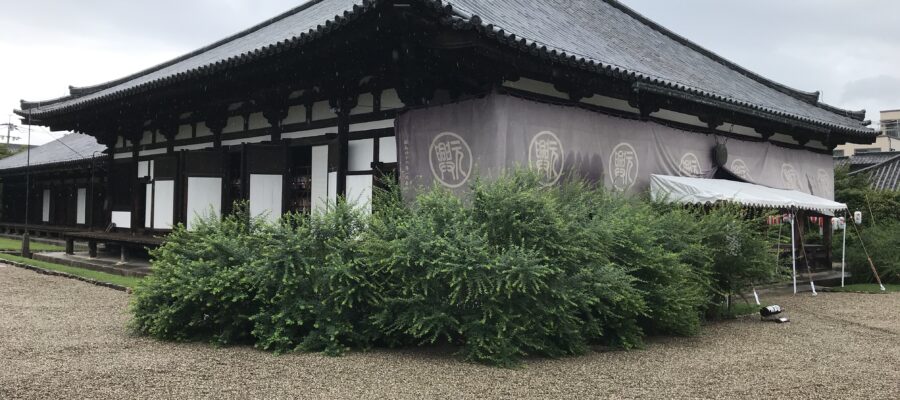ならまちの中の元興寺
奈良も少しずつ、垢ぬけてきたのか、「ならまち」あたりは、海外からの訪日客や、日本の若い観光客が食事や買い物をしながら散策できるエリアです。その中に、本日ご紹介する元興寺があります。いや、中というよりも、元々は元興寺の境内は広大でしたので、現在の「ならまち」エリア一帯がかつての元興寺だったのでしょう。
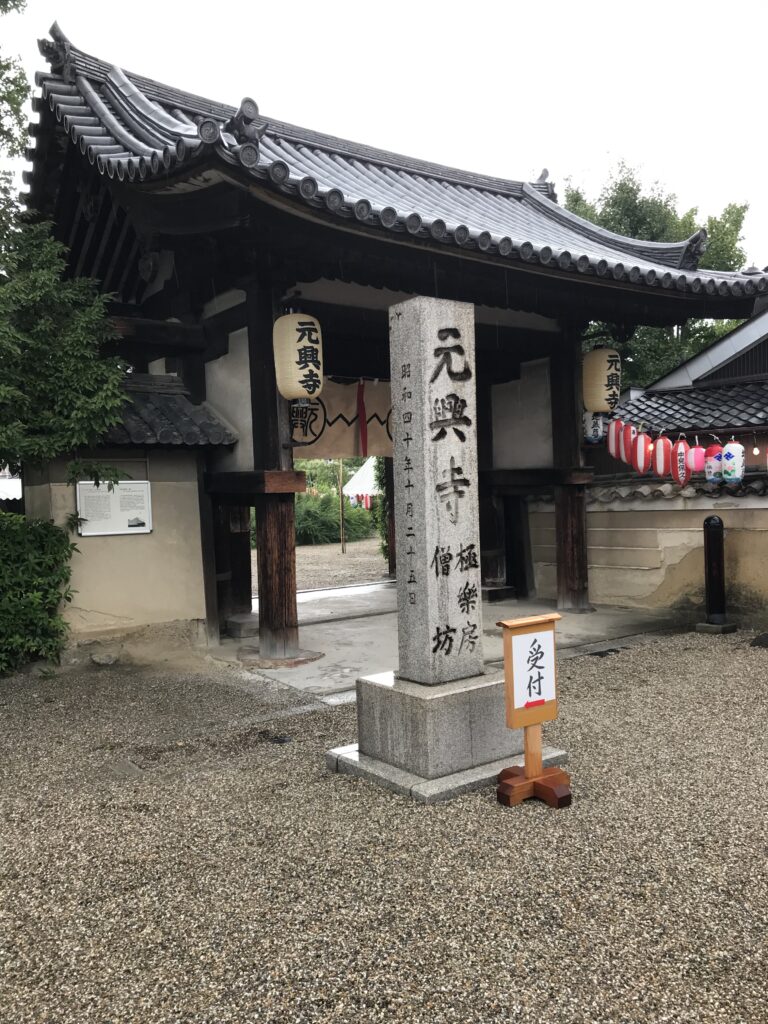
何度も名前を変えた元興寺
このお寺こそ、718年に法興寺(飛鳥寺)を平城京へ新築移建したものです。お寺の名前は、元々の飛鳥寺から始まり、法興寺、飛鳥大寺。名を元興寺と変えてきました。今まで訪問したお寺にも、平城京への移転と同時に名前をお寺がありました。
訪れた日は、残念ながら雨でした。当日は京都や大阪で今も開催される地蔵会の準備の最中で、本堂には幕が下がっており、境内内も忙しそうに歩き回る人を何人も見ました。まずは本堂(極楽堂)に上って、御参りをしました。
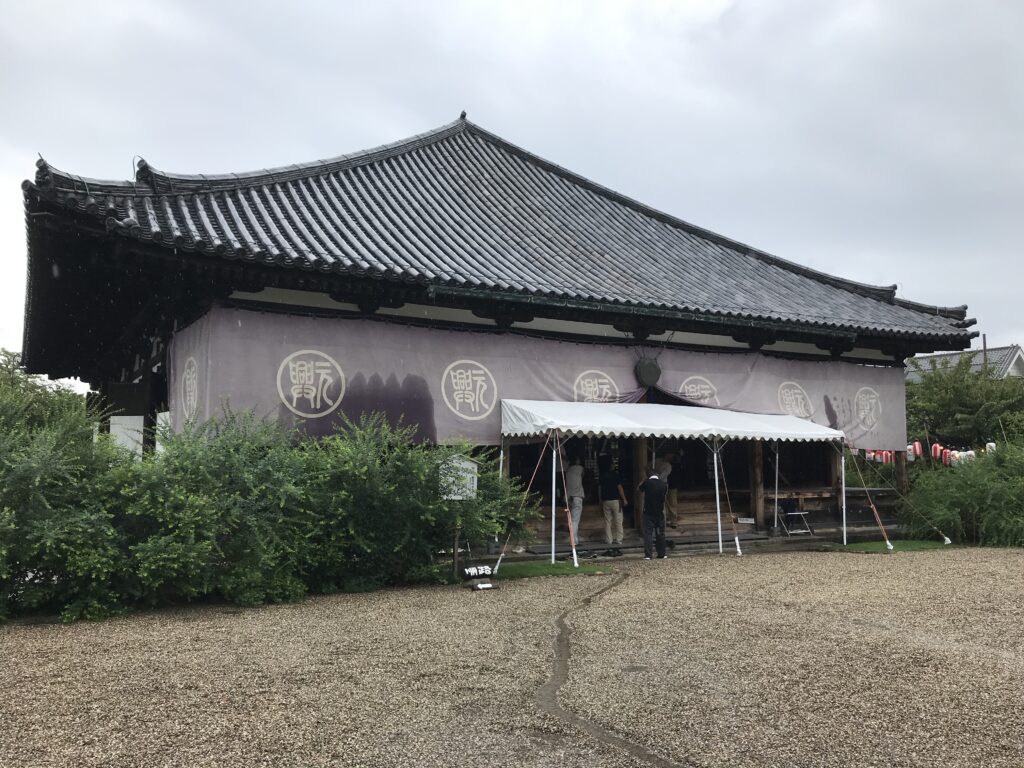
次に法輪館と呼ばれる建物に入り、仏像などを見せていただきました。ここには奈良時代につくられた五重小塔が展示されています。これは、奈良時代盛期の五重塔としては唯一現存するのものだそうです。内部は撮影禁止でしたのでは、写真はとっておりません。
飛鳥時代の瓦が今も現役
法輪館を出ますと、正面に国宝の本堂と同じく国宝の禅室の屋根が見えます。瓦を良く見ると、お寺の屋根でイメージする瓦の色と異なる瓦がたくさん敷かれています。そうです、これが、飛鳥時代から使われている日本最古の屋根瓦です。今も現役で、博物館の中ではなく、雨や夏の強い日差しを受ける屋根の上で、その役割を果たしています。やはり、奈良は奥が深いです。(完)
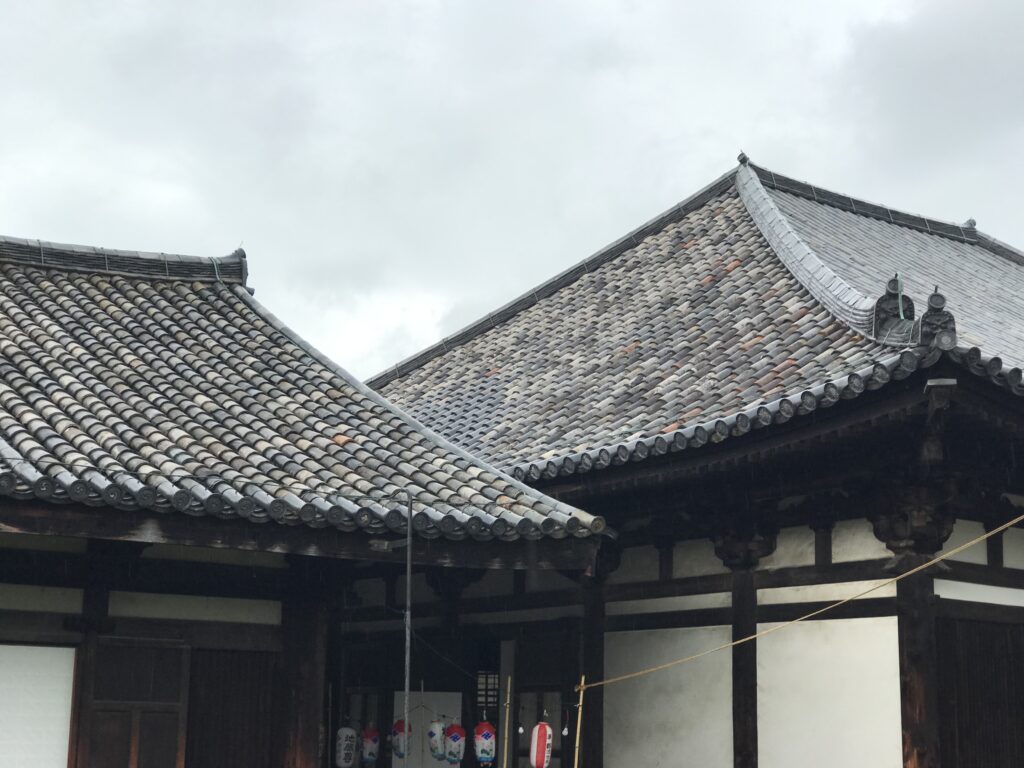
元興寺の御朱印
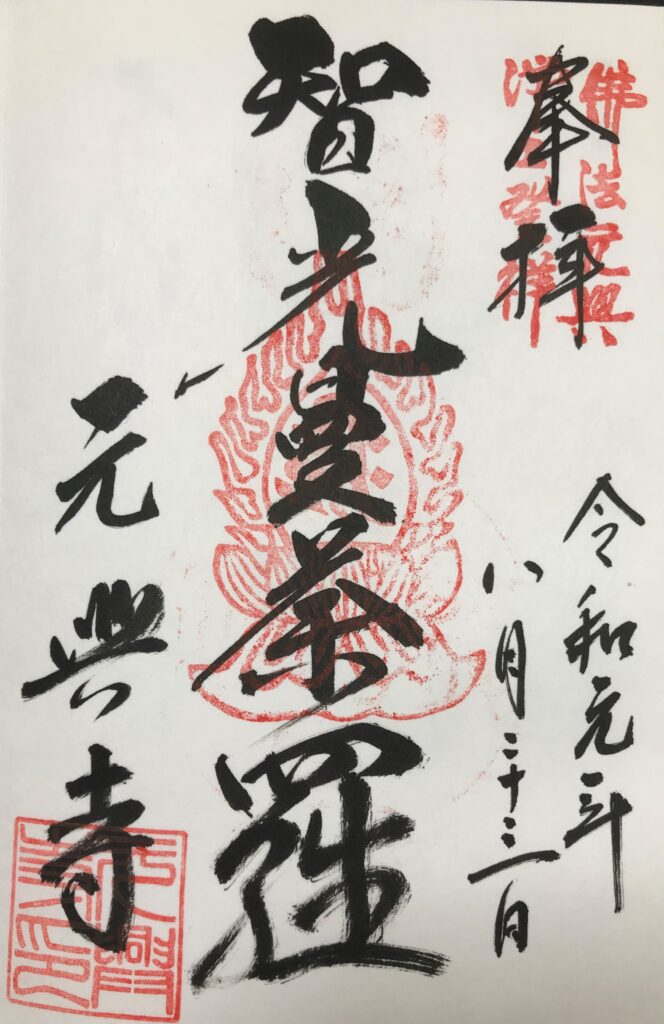
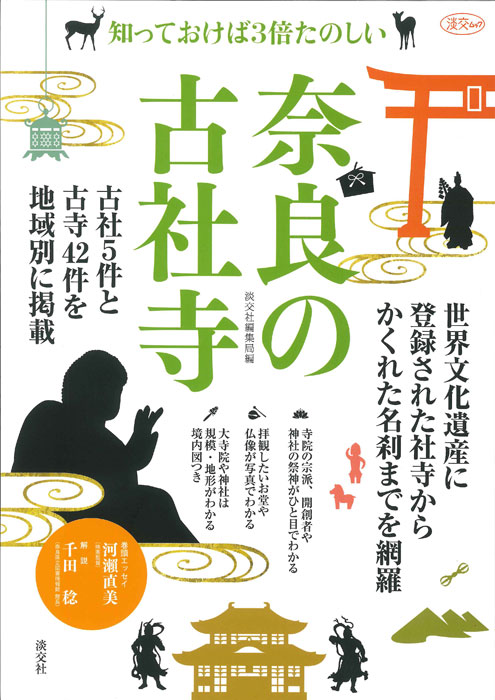
奈良の古社寺 知っておけば3倍たのしい (淡交ムック) [ 淡交社編集局 ]
価格:1,320円
(2023/1/8 00:38時点)
感想(0件)
Gango-ji Temple
Nara is gradually becoming more sophisticated, and the area around Naramachi is a popular place for visitors from overseas and young Japanese tourists to stroll around while eating and shopping. It is in this area that we will introduce today, Gangoji Temple, is located. No, rather than inside, the precincts of the temple were originally so vast that the entire present-day “Naramachi” area must have once been the site of the temple.
This temple is the one that was newly built and relocated from Hokoji Temple (Asuka Temple) to Heijo-kyo in 718. The name of the temple began with the original Asukadera Temple, then Hokoji Temple, then Asukadaiji Temple. The name has been changed to Gango-ji Temple. Some of the temples I have visited so far also changed their names when they were moved to Heijo-kyo.
Unfortunately, it was raining on the day I visited. On the day of our visit, the temple was in the middle of preparations for the Jizo-e (Jizo festival) that is still held in Kyoto and Osaka, so the curtain was lowered in the main hall and I saw a number of people walking around the temple grounds as if they were busy. First, we went up to the main hall (Gokurakudo) to pay my respects.
Next, I entered the building called “Hourinkan” to see Buddhist statues and other exhibits. Here, a five-story pagoda built in the Nara period is on display. This is said to be the only five-story pagoda from the Nara period still in existence. Photography was not allowed inside the pagoda, so I did not take any pictures.
After exiting the Hall of the Law, you will see the roof of the main hall, which is a national treasure, and the roof of the Zen room, also a national treasure, in front of the hall. If you look closely at the roof tiles, you will see many tiles of different colors from those you would expect to see on the roof of a temple. Yes, these are the oldest roof tiles in Japan, used since the Asuka period. They are still in use today, not inside the museum, but on the roof where they are exposed to rain and strong summer sunlight. After all, Nara is a very special place. (End)
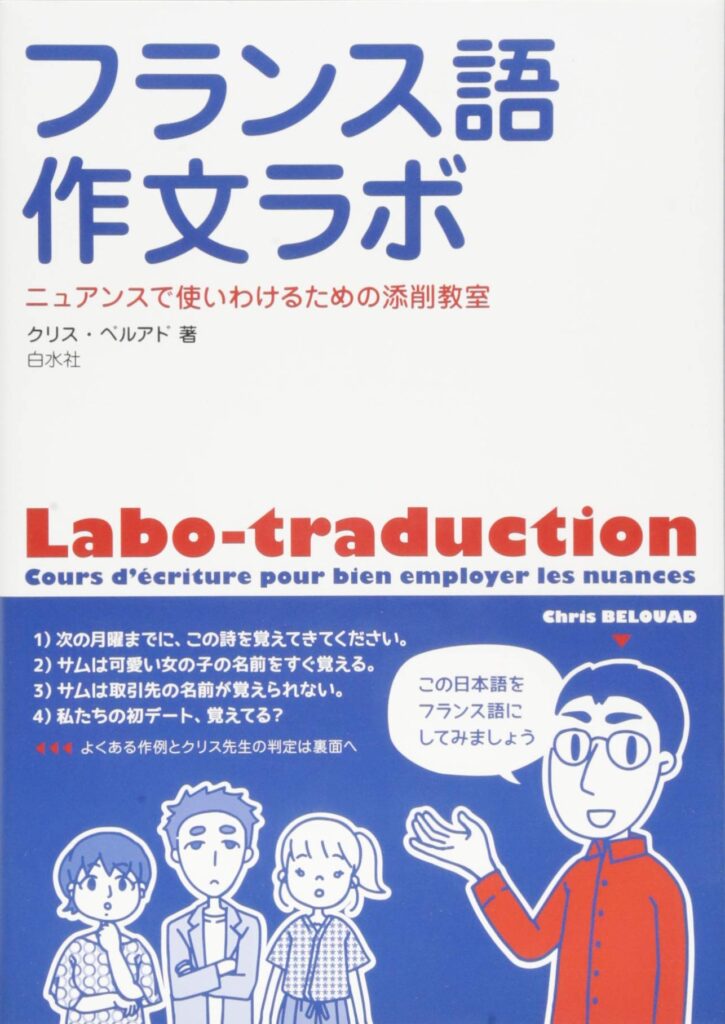
新品価格
¥2,420から
(2022/5/6 23:06時点)
Le temple Gango-ji
Nara devient progressivement plus sophistiquée, et le quartier de Naramachi est un endroit populaire pour les visiteurs étrangers et les jeunes touristes japonais, qui s’y promènent en mangeant et en faisant du shopping. C’est dans cette zone que se trouve le temple Gangoji que nous allons vous présenter aujourd’hui. Non, plutôt qu’à l’intérieur, l’enceinte du temple était à l’origine si vaste que tout le quartier actuel de “Naramachi” a dû être autrefois le site du temple.
Ce temple est celui qui a été nouvellement construit et déplacé du temple Hokoji (temple Asuka) à Heijo-kyo en 718. Le nom du temple a commencé par l’original Asukadera Temple, puis Hokoji Temple, puis Asukadaiji Temple. Le nom a été changé en temple Gango-ji. Certains des temples que j’ai visités jusqu’à présent ont également changé de nom lorsqu’ils ont été déplacés à Heijo-kyo.
Malheureusement, il pleuvait le jour de ma visite. Le jour de notre visite, le temple était en pleine préparation du Jizo-e (festival de Jizo) qui a toujours lieu à Kyoto et Osaka, le rideau était donc baissé dans le hall principal et j’ai vu un certain nombre de personnes marcher dans l’enceinte du temple comme si elles étaient occupées. Tout d’abord, nous sommes montés dans le hall principal (Gokurakudo) pour présenter mes respects.
Ensuite, je suis entré dans le bâtiment appelé “Hourinkan” pour voir des statues bouddhistes et d’autres objets exposés. Ici, une pagode à cinq étages construite à l’époque de Nara est exposée. On dit que c’est la seule pagode à cinq étages de la période de Nara qui existe encore. La photographie n’étant pas autorisée à l’intérieur de la pagode, je n’ai pas pris de photos.
Après avoir quitté le Hall de la loi, vous verrez le toit du hall principal, qui est un trésor national, et le toit de la salle Zen, également un trésor national, en face du hall. Si vous regardez attentivement les tuiles du toit, vous verrez de nombreuses tuiles de couleurs différentes de celles que l’on s’attend à voir sur le toit d’un temple. Oui, ce sont les plus anciennes tuiles du Japon, utilisées depuis la période Asuka. Elles sont encore utilisées aujourd’hui, non pas à l’intérieur du musée, mais sur le toit, où elles sont exposées à la pluie et à la forte lumière du soleil d’été. Après tout, Nara est un endroit très spécial. (Fin)
